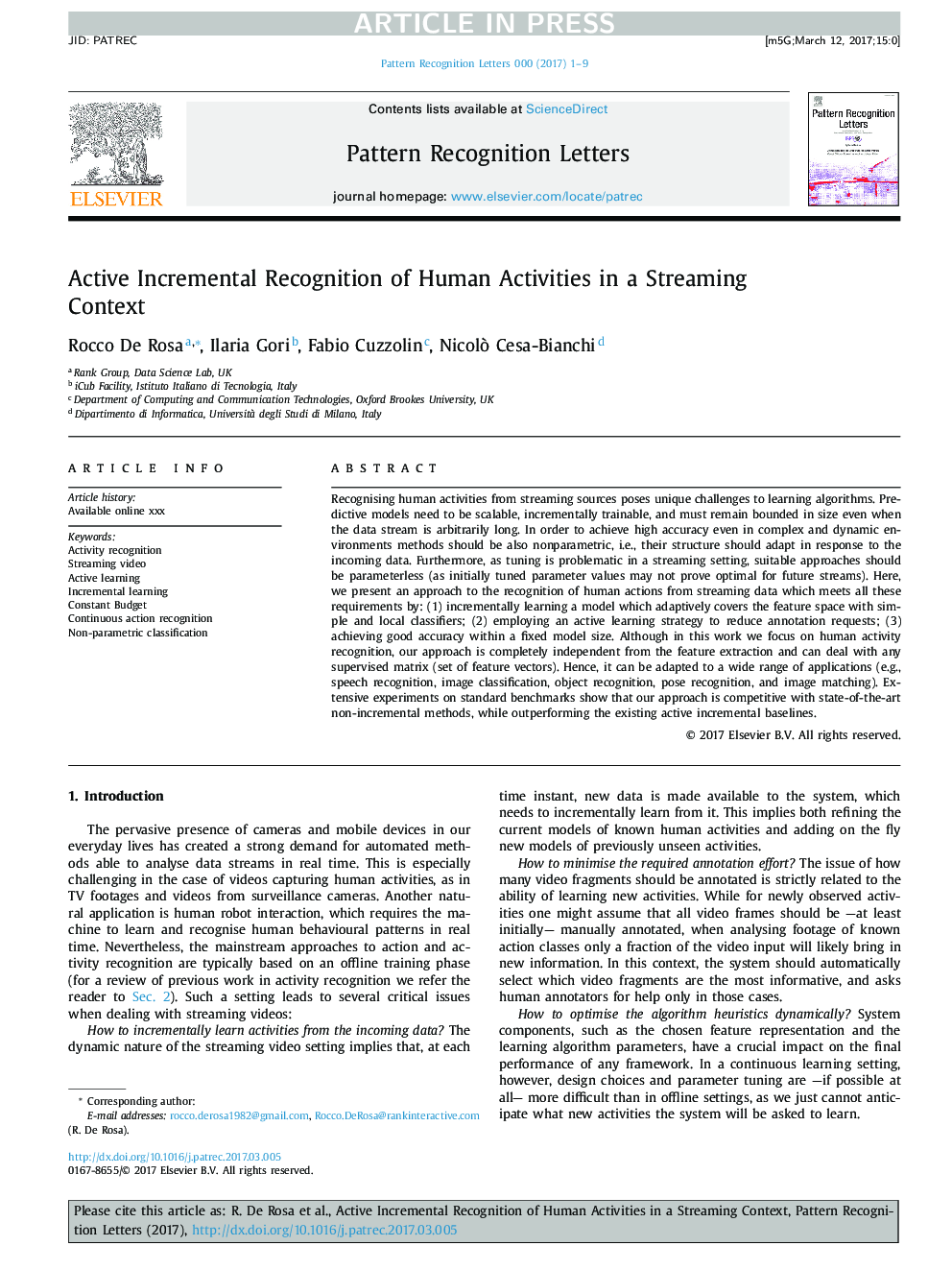| Article ID | Journal | Published Year | Pages | File Type |
|---|---|---|---|---|
| 6940839 | Pattern Recognition Letters | 2017 | 9 Pages |
Abstract
Recognising human activities from streaming sources poses unique challenges to learning algorithms. Predictive models need to be scalable, incrementally trainable, and must remain bounded in size even when the data stream is arbitrarily long. In order to achieve high accuracy even in complex and dynamic environments methods should be also nonparametric, i.e., their structure should adapt in response to the incoming data. Furthermore, as tuning is problematic in a streaming setting, suitable approaches should be parameterless (as initially tuned parameter values may not prove optimal for future streams). Here, we present an approach to the recognition of human actions from streaming data which meets all these requirements by: (1) incrementally learning a model which adaptively covers the feature space with simple and local classifiers; (2) employing an active learning strategy to reduce annotation requests; (3) achieving good accuracy within a fixed model size. Although in this work we focus on human activity recognition, our approach is completely independent from the feature extraction and can deal with any supervised matrix (set of feature vectors). Hence, it can be adapted to a wide range of applications (e.g., speech recognition, image classification, object recognition, pose recognition, and image matching). Extensive experiments on standard benchmarks show that our approach is competitive with state-of-the-art non-incremental methods, while outperforming the existing active incremental baselines.
Keywords
Related Topics
Physical Sciences and Engineering
Computer Science
Computer Vision and Pattern Recognition
Authors
Rocco De Rosa, Ilaria Gori, Fabio Cuzzolin, Nicolò Cesa-Bianchi,
